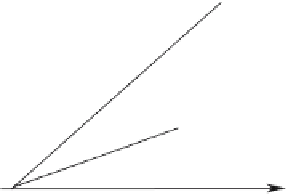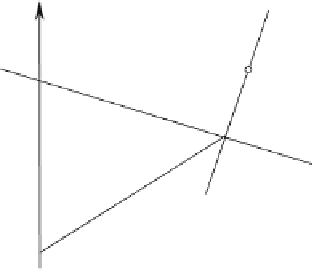Graphics Reference
In-Depth Information
1
√
2
1
√
2
=ˆ
v
·
p
−
t
=
−
i
+
j
·
i
+
j
−
i
=
and
1
√
2
1
√
2
1
2
i
1
2
j
q
=
i
+
−
i
+
j
=
+
The coordinates of Q are
2
2
.
The distance
j
=
i
2
j
=
√
2
2
1
√
2
1
√
2
1
2
i
1
PQ
=
i
+
j
−
+
−
i
+
+
=
07071
3.9 The position of a point reflected in a line
In this section we consider the problem of calculating the reflection of a point in a straight
line, and once more we consider two separate strategies for two forms of the line equation. In
both cases, the key to the solution is based on the fact that the line connecting the point to its
reflection is perpendicular to the reflecting line.
3.9.1 The Cartesian form of the line equation
Y
n
P
λ
n
T
p
λ
n
t
Q
q
O
X
Figure 3.23.
The objective is to produce a vector equation of the form
q
. The RHS of this equation
can only contain references to
p
and variables in the line equation. is acceptable, so long as
it can be defined. As
−
QP is orthogonal to the reflecting line, we must anticipate employing the
dot product.
With reference to Fig. 3.23, let the line equation be
=
p
+
ax
+
by
=
c



















